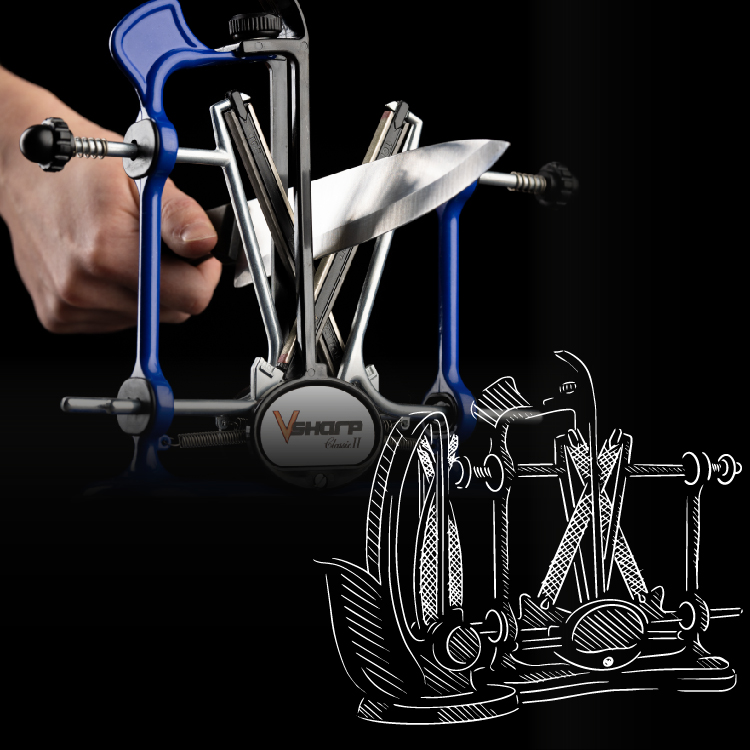Various Sharpening Angles: The Warthog V-Sharp sharpeners usually offer multiple sharpening angles to choose from, to cover different knife types and applications. Many other systems only have one fixed sharpening angle.
Replaceable Sharpening Units: The sharpening units of the Warthog V-Sharp sharpeners can be replaced to use different grits for different sharpening stages. This is not possible with many other systems.
Diamond Sharpening Rods: While some sharpening systems use ceramic or water stones, the Warthog V-Sharp sharpeners rely on high-quality diamond sharpening rods. These are particularly durable and enable fast and effective sharpening, even with heavily worn blades.
Guide Aids: The Warthog V-Sharp sharpeners often have guide aids that make it easier to position the blade correctly. This is especially helpful for beginners.


